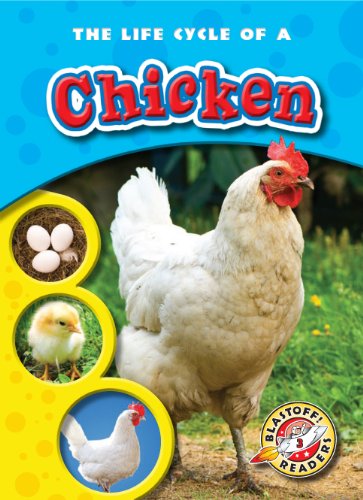-
The Life Cycle of a Butterfly
Colleen Sexton
Library Binding (Bellwether Media, Jan. 1, 2010)A female butterfly lays eggs on a leaf to begin the butterfly life cycle. The eggs hatch into caterpillars, and caterpillars form chrysalises to change into butterflies. Students will follow a butterfly as it grows from an egg into an adult. L
L
-
The Life Cycle of a Salmon
Colleen Sexton
Library Binding (Bellwether Media, Jan. 1, 2010)Adult salmon spawn at the end of their life cycle. They fight strong currents while swimming upriver to the place where they hatched. Young readers will follow a salmon from egg to adult. K
K
-
The Life Cycle of a Frog
Colleen Sexton
Library Binding (Bellwether Media, Jan. 1, 2010)The life cycle of a frog takes place in water and on land. It begins in spring with a male frog croaking a song to attract a female. Young readers will read about and watch an egg develop into a tadpole and then into an adult frog. L
L
-
Earwigs
Colleen Sexton
Library Binding (Bellwether Media, Aug. 1, 2008)Contrary to their name's suggestion, earwigs do not crawl into people's ears. Earwigs have pinchers on their bodies that they use to fight other earwigs or pick up food. Find out about the other parts of an earwig's body, what earwigs eat, and how earwigs take care of their young. K
K
-
The Life Cycle of a Penguin
Colleen Sexton
Library Binding (Bellwether Media, Jan. 1, 2010)Penguins must complete their life cycle in very cold temperatures. To protect their eggs from the cold, penguins use brood patches. Students will watch a penguin chick hatch from an egg and grow into an adult. L
L
-
Canada
Colleen Sexton
Library Binding (Bellwether Media, Aug. 8, 2010)America's northern neighbor, Canada, is similar to the United States in many ways but also very different. Kids will learn about Canada's diverse wildlife as well as some of its biggest cities such as Toronto and Vancouver. They will read about what school is like for kids in Canada, how people often speak both English and French, and how Canadians enjoy playing hockey. P
P
-
Tide Pools
Colleen Sexton
Library Binding (Bellwether Media, Aug. 1, 2008)Tide pools are filled up and emptied as the tide comes in and goes out. This makes living in them very difficult. Explore how tide pools are host to fascinating creatures such as sea anemones, starfish, crabs, and sea urchins! K
K
-
The Life Cycle of a Sea Horse
Colleen Sexton
Library Binding (Bellwether Media, Jan. 1, 2010)Male sea horses have a unique role in the sea horse life cycle. They carry the eggs and give birth to as many as 200 babies at one time. Young children can track a sea horse's life cycle from egg to fry to adult. O
O
-
The Life Cycle of a Chicken
Colleen Sexton
Library Binding (Bellwether Media, Aug. 8, 2010)Roosters attract hens by strutting around and showing off their brilliant feathers. This book introduces children to the cycle of a chicken's life, explaining how a chick hatches from an egg and develops into an adult. K
K
-
The Life Cycle of a Bee
Colleen Sexton
Library Binding (Bellwether Media, Jan. 1, 2010)Bees begin their life cycle as eggs in honeycomb cells. Every day, a queen bee can lay as many as 2,000 eggs. Young readers will study a bee's growth from egg to grub to pupa to adult. O
O
-
Cuttlefish
Colleen Sexton
Library Binding (Bellwether Media, Aug. 1, 2009)Cuttlefish are chameleons of the sea. They can change their skin color to match their surroundings. Beginning readers will discover where cuttlefish live, what they eat, and how they stay safe from predators. M
M
